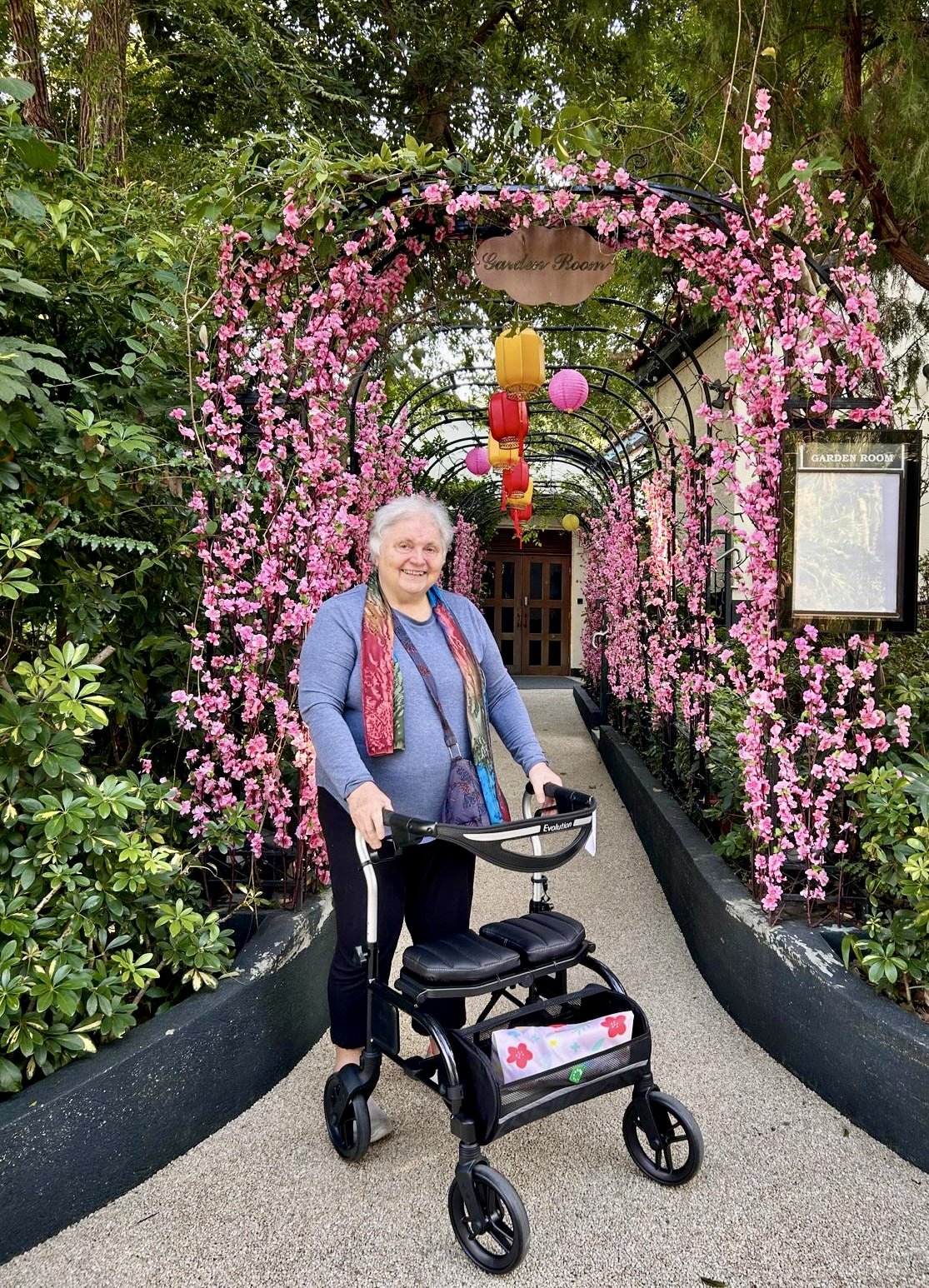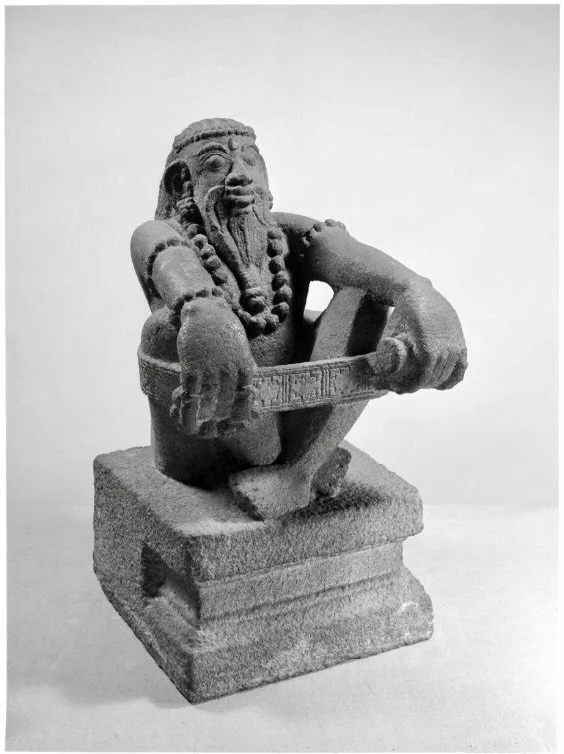the movement
honor ancestors, serve descendants, nourish all
Photo: my mom in a garden setting with her walker on the way to meet her pals
Uniquely human: using tools
Tools come in many forms
This winter, my mom had the excellent idea to start using a walker. In the picture above, she walked several Hong Kong city blocks and up a slope to meet her pals for a lunar new year celebration. Then she walked home. My mom joyfully calls her walker “my wheels.” While that name might imply speed, the wisdom of this elder is the use of the device to intentionally find smooth.
At age 83, with a few major illness recoveries and a full hip replacement under her belt, she is working with some musculoskeletal imbalances. While my mom is diligent with her physical therapy to directly address the work of rebalancing her muscles, the walker helps her stability so that distance walking feels more manageable. For human beings the act of walking itself is a beautiful expression of equilibrium. Walking outside (versus walking in your home) presents shifting environmental challenges for the body-mind complex. Her “wheels" got her out of the house and going to where she wanted to go. The tool supports her feelings of freedom and mobility after feelings of limitation. Consistent physical and social activity are paramount to happy healthy aging for us all.
My mom could have decided she was embarrassed to use a walker, perhaps succumbing to a mix of pride and fear. Without a walker she might collapsed into anxiety and minimized the daily activities of living. Instead, she chose to be human and use a tool, achieving her goals and obtaining peace of mind.
My mom often reminds me that the early peoples of the planet were most resourceful and creative with the use of tools. Our human ancestors twined grasses, reeds, vines, even bark to craft ropes. These reminders are her way of encouraging me to be resourceful with what I already have (thank you, mama!). I was delighted to learn about the use of tools (ropes, belts, straps) in the age-old practice of Yoga.
Image: Granite statue of an Ascetic, Rishi, or Yogi, using a strap in seated posture. Tamil Nadu, South India, circa 18th century. Image credit: Victoria and Albert Museum. https://collections.vam.ac.uk/item/O120563/sculpture-unknown/?carousel-image=2012FN0724
The tools of Yoga
Our ancient yogic ancestors sat in meditation for long stretches of time. They used the stillness of the meditative seat to observe and quiet the modulations of the mind. Using the mind as a tool to control the senses allows for longer stretches of connection with pure consciousness. By establishing an expansive, simple meditative practice, the yogis (and us!) access higher spiritual truths.
Yoga advises when meditating to sit with proper posture: the pelvis, chest, and head vertically aligned. Tall posture has a positive effect for the nervous system and offers most advantage for breathing. Yet, sitting with lifted posture for lengthy periods can be challenging. Often parts of our anatomy protest with aches and pains. In the above image of a statue of a yogi circa 18th century we see the use of a belt around the legs and pelvis to support optimal posture.
Sitting still and observing my mind is a challenge for me. I use tools to prepare and sit in meditation. I first use movement as a means to ready myself before even trying to settle into stillness. Sometimes it’s a yoga asana (posture) practice, other times it is ten minutes of singing and dancing while washing the dishes. Eventually I can sense when I’m ready to begin. I use a foam block under my pelvis to assist in maintaining a tall spine for the duration of the meditation practice.
My mom uses the walker to help her confront and address her mobility challenges. The outcome is the maintenance of her physical health and emotional social connectivity. I use movement as a tool to help me turn inward to mature my meditation practice. This psycho-somatic (mind-body) practice allows me to better manifest the cornerstones of the yogic moral guides ahimsa and satya: nonviolence and alignment with truth. The outcome of this practice is the ever evolving realization of the spiritual truth that I am connected with all of existence.
There are resourceful and creative ways by which each of us can approach and face our doubts and problems. What are your skilled and creative means of meeting your challenges? Whatever tools you use I’m cheering you on! The use of tools makes us uniquely human. I’m so grateful to be human on this planet with you right here and now. We all need your resourcefulness and creativity now more than ever.
March 2025


